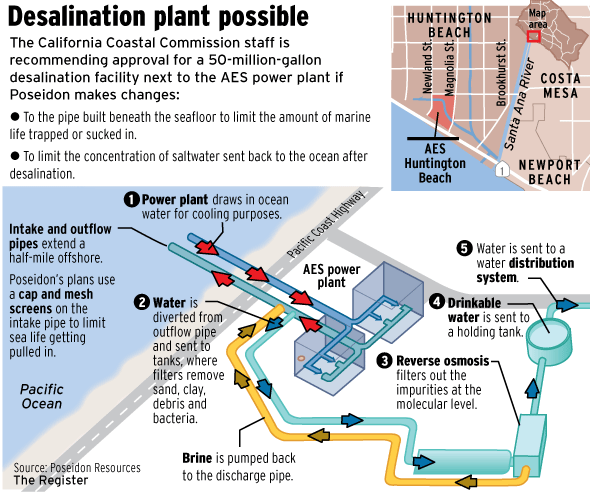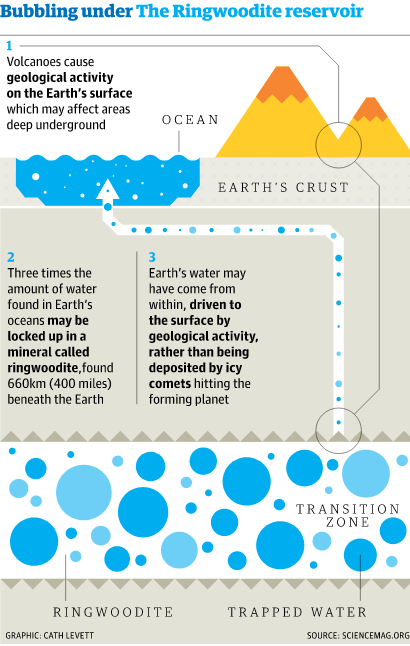Lake Mead water lowest since Hoover Dam built as shortage continues (usatoday.com)
Not only is the water shortage critical, it could also affect electricity production by the dam, which serves 8 million people.
The past 22 year period has been the driest on record, called a "megadrought."
They're talking about a desalination plant and water recycling projects.
We tend to use desert landscaping for homes here in southern Arizona, but in places like Phoenix and southern California, everyone wants large lush green lawns, which take up a good deal of water.
Desalination seems to be the way to go. The article erroneously refers to the Gulf of California as the "Sea of Cortez," but either way, that could be an enormous help if they can start building desalination plants.
I often wonder why cloud seeding is not being considered. I remember when that was considered a promising way of getting rain, although I haven't heard of it in quite a number of years.
In any case, something has to be done soon. Each year, the fire season gets worse and worse.
I also wonder: We have pipelines all over the US to transport oil and gas. Why not a pipeline from the areas which are getting too much water back east and sending it out west? We keep hearing about torrential rains, hurricanes, and floods back east - so they're getting too much water, and we're not getting enough.
A more drastic measure might be to impose a limit on population. This desert region can't accommodate the number of people who migrate here on a yearly basis.
Are there any large, untapped caches of water underneath the surface which we can dig for?
What can be done?
Not only is the water shortage critical, it could also affect electricity production by the dam, which serves 8 million people.
PHOENIX – Lake Mead has declined to its lowest level since the reservoir was filled in the 1930s following the construction of Hoover Dam, marking a new milestone for the water-starved Colorado River in a downward spiral that shows no sign of letting up.
The reservoir near Las Vegas holds water for cities, farms and tribal lands in Arizona, Nevada, California and Mexico. Years of unrelenting drought and temperatures pushed higher by climate change are shrinking theflow into the lake, contributing to the large mismatch between the demands for water and the Colorado’s diminishing supply.
The lake's rapid decline has been outpacing projections from just a few months ago. Its surface reached a new low Wednesday night when it dipped past the elevation of 1,071.6 feet, a record set in 2016. But unlike that year, when inflows helped push the lake levels back up, the watershed is now so parched and depleted that Mead is projected to continue dropping next year and into 2023.
Lake Mead, the largest reservoir in the country, now stands at just 36% of full capacity.
Feds expected to declare official Lake Mead shortage this summer
In the past month, Mead has already fallen below the official threshold of a shortage, which the federal government is expected to declare in August. That will trigger major cuts in water allotments for Arizona, Nevada and Mexico next year. And even bigger water reductions could be forced upon the Southwest if the reservoir continues to drop, which government estimates show is likely.
“It should represent an earthquake in people's sense of urgency, on all fronts,” said Felicia Marcus, a visiting fellow at Stanford University’s Water in the West program.
The reservoir’s continuing decline, Marcus said, should ring “alarm bells” across the West that the days of business-as-usual approaches are over and that "we need to accelerate everything we can to use less water.”
That includes speeding up efforts that cities and water agencies are already undertaking in parts of the Southwest, such as investing in recycling wastewater, capturing stormwater or cleaning up polluted groundwater, Marcus said. And it also includes promoting conservation and more efficient water use in a variety of ways, she said, from investing in water-saving technologies on farms to offering homeowners cash rebates to removing grass and replacing it with drought-tolerant landscaping.
The Colorado River and its tributaries provide water for cities from Denver to Tucson and about 4.5 million acres of farmland from Wyoming to the U.S.-Mexico border. About 70% of the water diverted in the seven U.S. states is used for agriculture, flowing to fields of hay and cotton, fruit orchards and farms that produce much of the country’s winter vegetables.
The past 22 year period has been the driest on record, called a "megadrought."
The watershed has been ravaged by one of the driest 22-year periods in centuries. Scientists describe the past two decades as a megadrought worsened by climate change, and say the Colorado River Basin is undergoing “aridification” that will complicate water management for generations to come.
In 2000, Lake Mead was nearly full and its surface was lapping at the spillway gates of the Hoover Dam. Since then, the reservoir has fallen nearly 143 feet. And it's now at the lowest levels since 1937.
Two years ago, representatives of the seven states that depend on the Colorado River met at Hoover Dam to sign a set of agreements called the Drought Contingency Plan, which laid out measures to take less water and share in reductions during a shortage to reduce the risks of Lake Mead falling to critically low levels.
But the declines have continued and the drought has intensified over the past year, with much of the watershed baking through the driest 12 months in 126 years of records. The river and its tributaries have dwindled, shrinking the flow into Lake Powell at the Utah-Arizona border, and in turn driving the receding water levels at Lake Mead.
Officials from Arizona, Nevada, California and Mexico have been talking about other ways they might work together on long-term projects to shore up water supplies. One idea they’re studying would be for Arizona to work with Mexico to build a desalination plant on the shore of the Sea of Cortez and trade some of the drinking water that’s produced for a portion of Mexico’s Colorado River water.
Officials from Las Vegas’ Southern Nevada Water Authority have offered to invest in a water recycling project in Southern California, which would enable the agency to use some of the Metropolitan Water District’s Colorado River water in exchange. Arizona water officials are also considering joining the other agencies and taking part in the project.
Marcus said there are various promising efforts underway, and Lake Mead’s retreating shorelines show the region needs to pick up the pace.
“We have to get off our butts and go faster on all of it,” she said. “We know what to do. We just have to turn up the volume.”
That includes investing in infrastructure projects to reduce reliance on importing water from elsewhere, Marcus said, and investing in better sensor networks so that officials aren’t “guessing based on outdated models that weren't built for a climate change world.”
She offered another analogy for the Colorado River’s worsening crisis.
“The house is on fire and we're still rearranging the furniture and thinking about, you know, do we want to redecorate the kitchen?” Marcus said. “That's not to disparage all the work that's been done. It's just we have to do a lot more.”
They're talking about a desalination plant and water recycling projects.
We tend to use desert landscaping for homes here in southern Arizona, but in places like Phoenix and southern California, everyone wants large lush green lawns, which take up a good deal of water.
Desalination seems to be the way to go. The article erroneously refers to the Gulf of California as the "Sea of Cortez," but either way, that could be an enormous help if they can start building desalination plants.
I often wonder why cloud seeding is not being considered. I remember when that was considered a promising way of getting rain, although I haven't heard of it in quite a number of years.
In any case, something has to be done soon. Each year, the fire season gets worse and worse.
I also wonder: We have pipelines all over the US to transport oil and gas. Why not a pipeline from the areas which are getting too much water back east and sending it out west? We keep hearing about torrential rains, hurricanes, and floods back east - so they're getting too much water, and we're not getting enough.
A more drastic measure might be to impose a limit on population. This desert region can't accommodate the number of people who migrate here on a yearly basis.
Are there any large, untapped caches of water underneath the surface which we can dig for?
What can be done?




